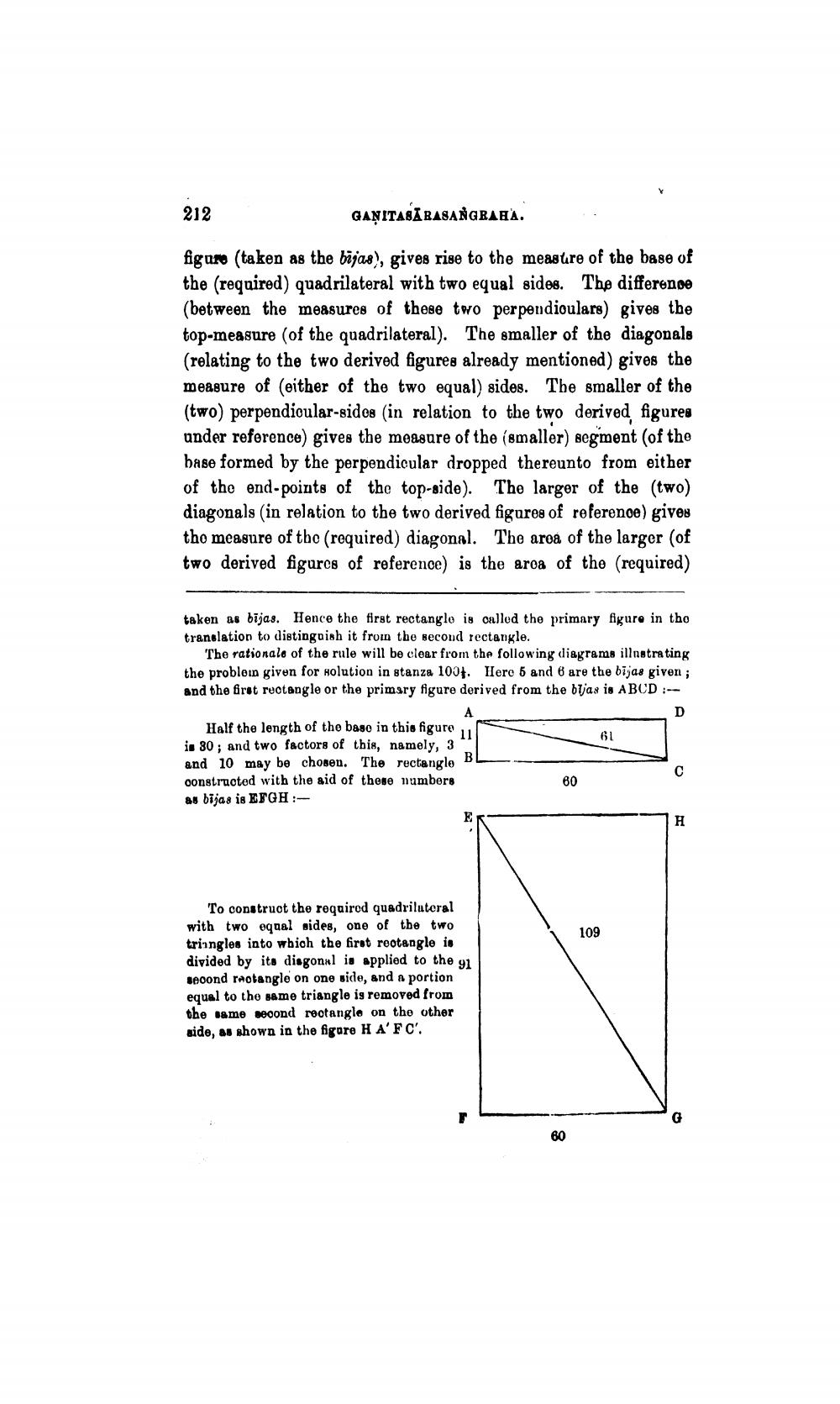________________
212
GANITASARASANGRAHA.
figure (taken as the bijas), gives rise to the measure of the base of the (required) quadrilateral with two equal sides. The difference (between the measures of these two perpendiculars) gives the top-measure (of the quadrilateral). The smaller of the diagonals (relating to the two derived figures already mentioned) gives the measure of (either of the two equal) sides. The smaller of the (two) perpendicular-sides (in relation to the two derived figures under reference) gives the measure of the (smaller) segment (of the base formed by the perpendicular dropped thereunto from either of the end-points of the top-side). The larger of the (two) diagonals (in relation to the two derived figures of reference) gives the measure of the (required) diagonal. The area of the larger (of two derived figures of reference) is the area of the (required)
taken as bijas. Hence the first rectangle is called the primary figure in the translation to distinguish it from the second rectangle.
The rationale of the rule will be clear from the following diagrams illustrating the problem given for solution in stanza 100. Here 5 and 6 are the bijas given; and the first rectangle or the primary figure derived from the bljas is ABCD :--
D
A
B
Half the length of the base in this figure 11 is 30; and two factors of this, namely, 3 and 10 may be chosen. The rectangle constructed with the aid of these numbers. as bijas is EFGH:
E
To construct the required quadrilateral with two equal sides, one of the two triangles into which the first rectangle is divided by its diagonal is applied to the 91 second rectangle on one side, and a portion equal to the same triangle is removed from the same second rectangle on the other side, as shown in the figure HA'FC'.
F
60
60
61
109
C
H
G




